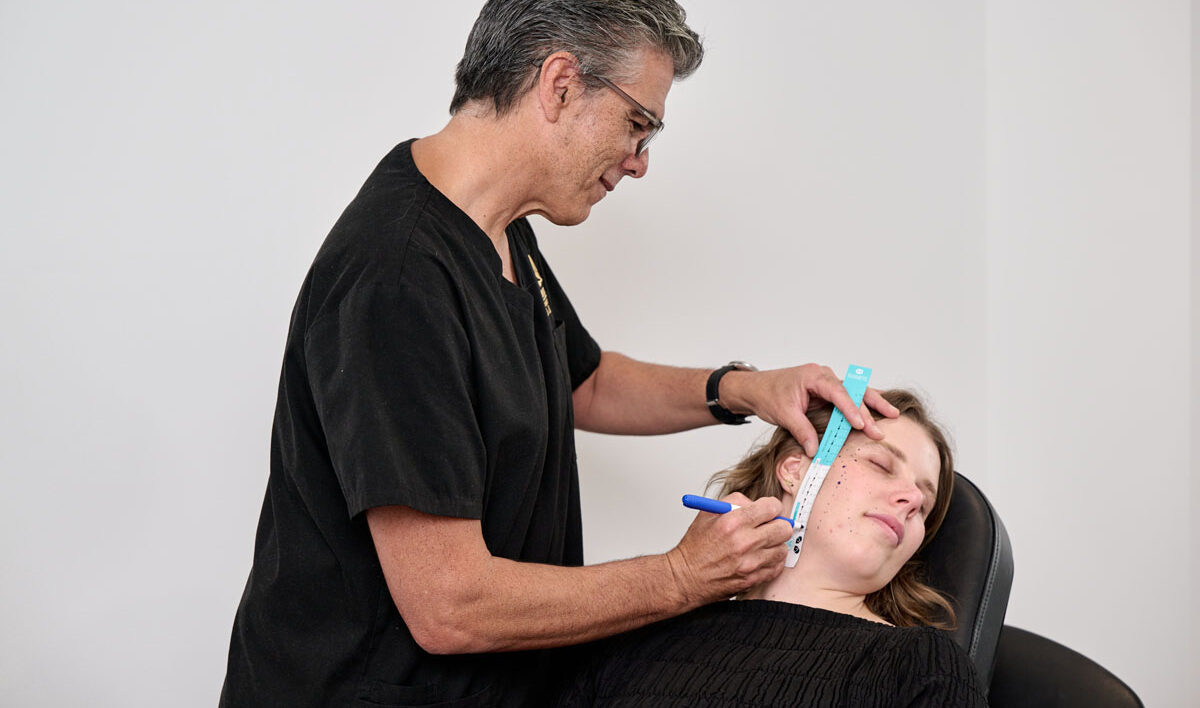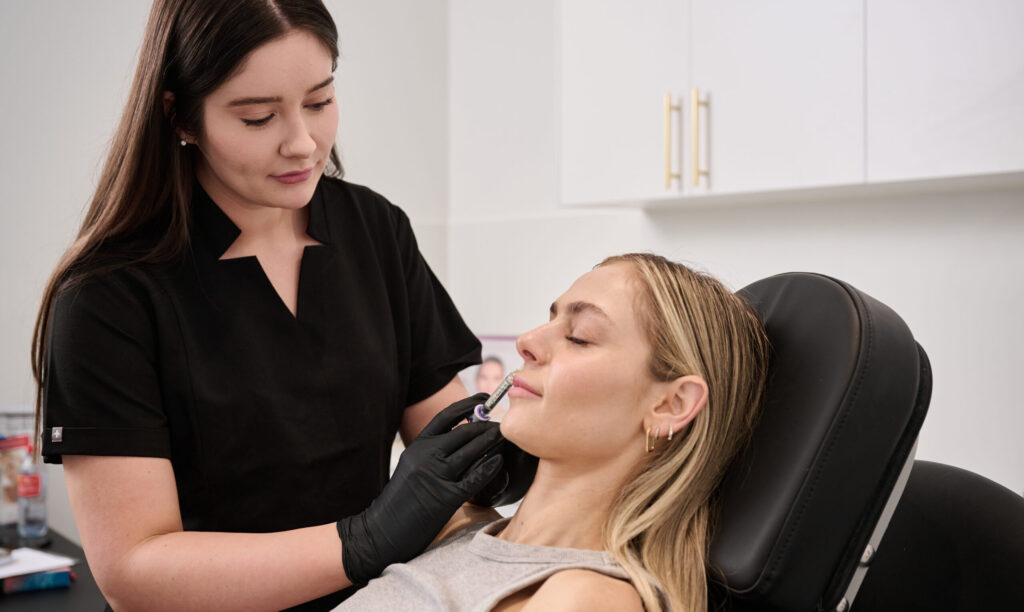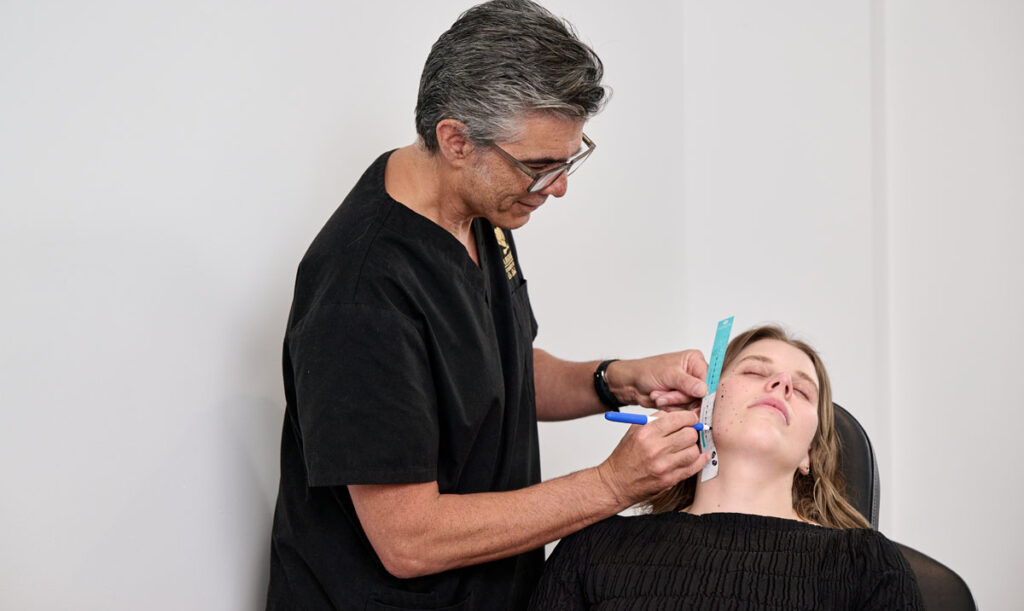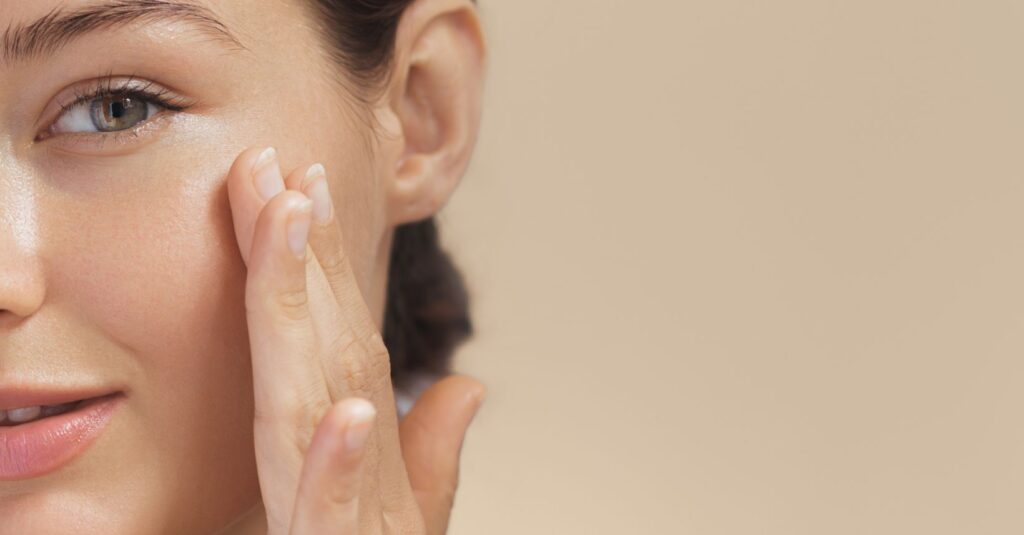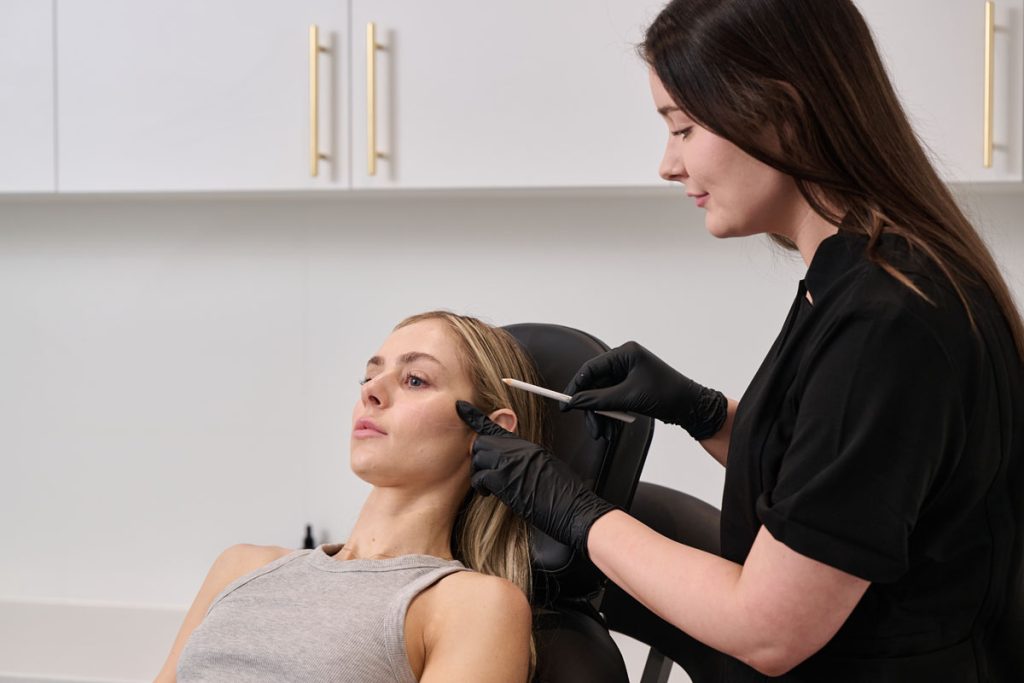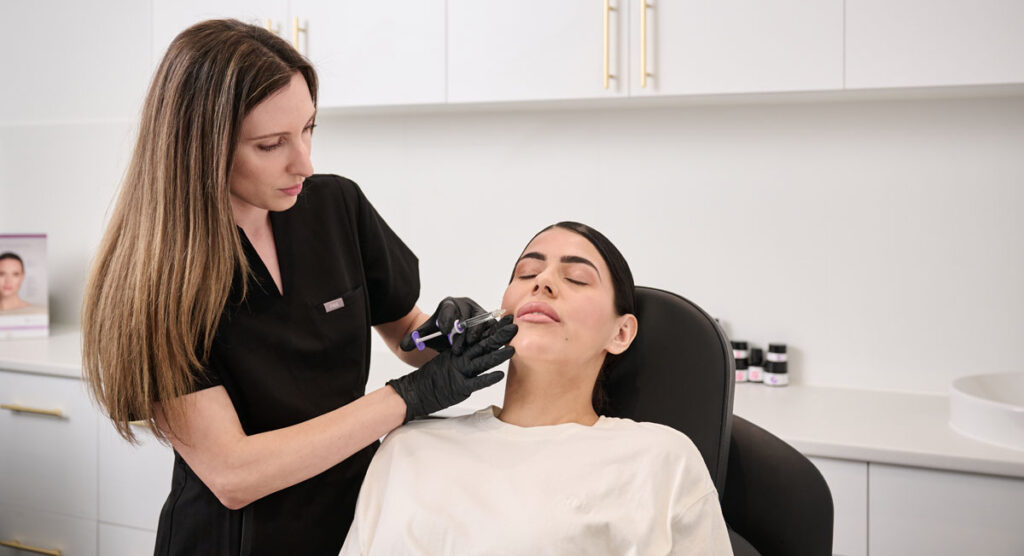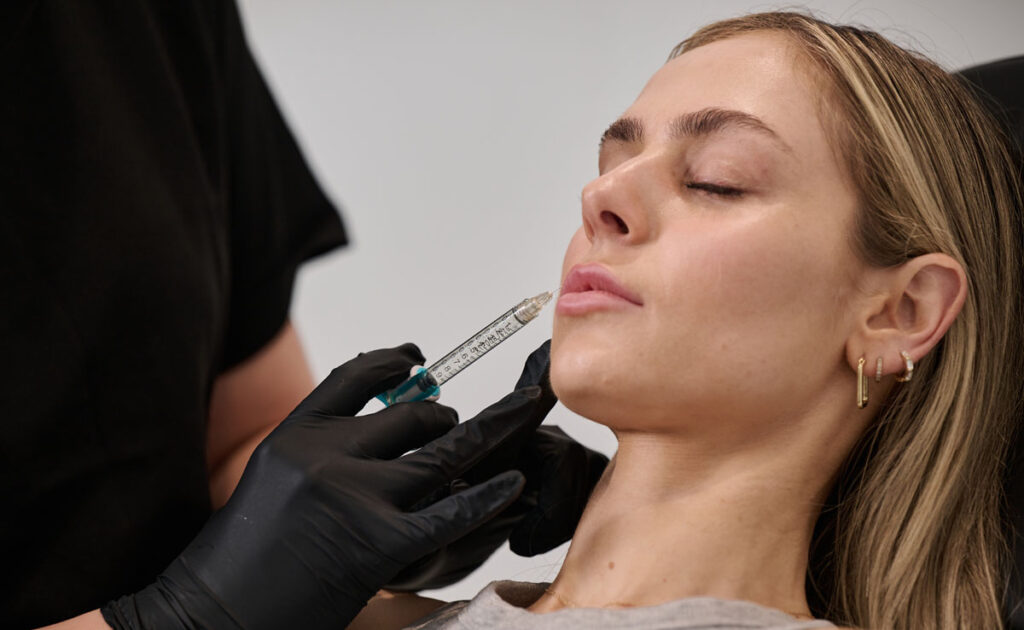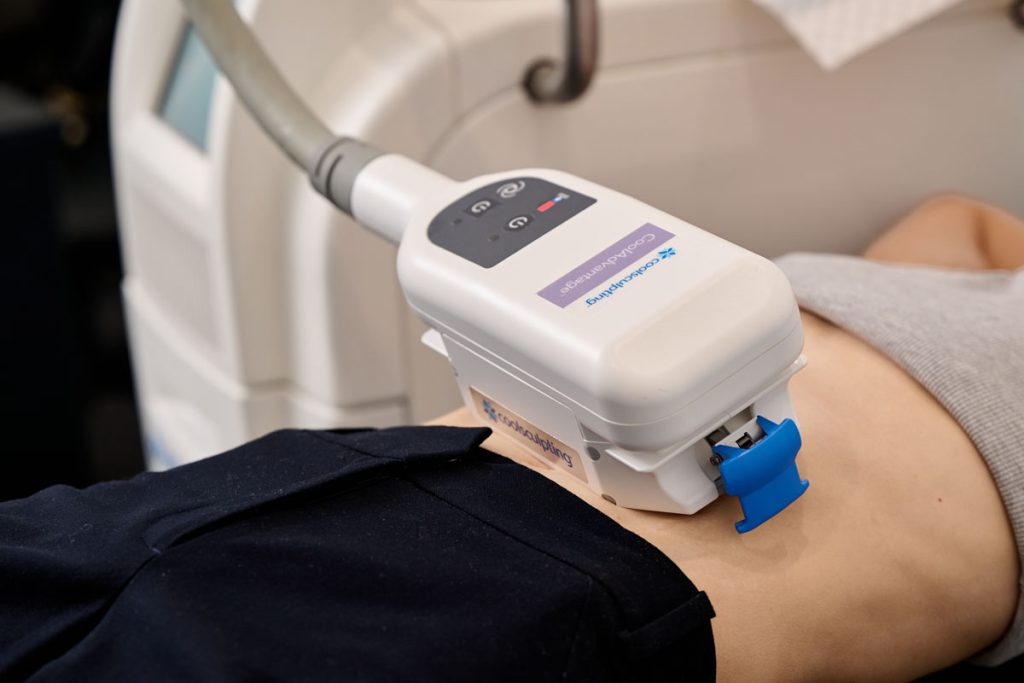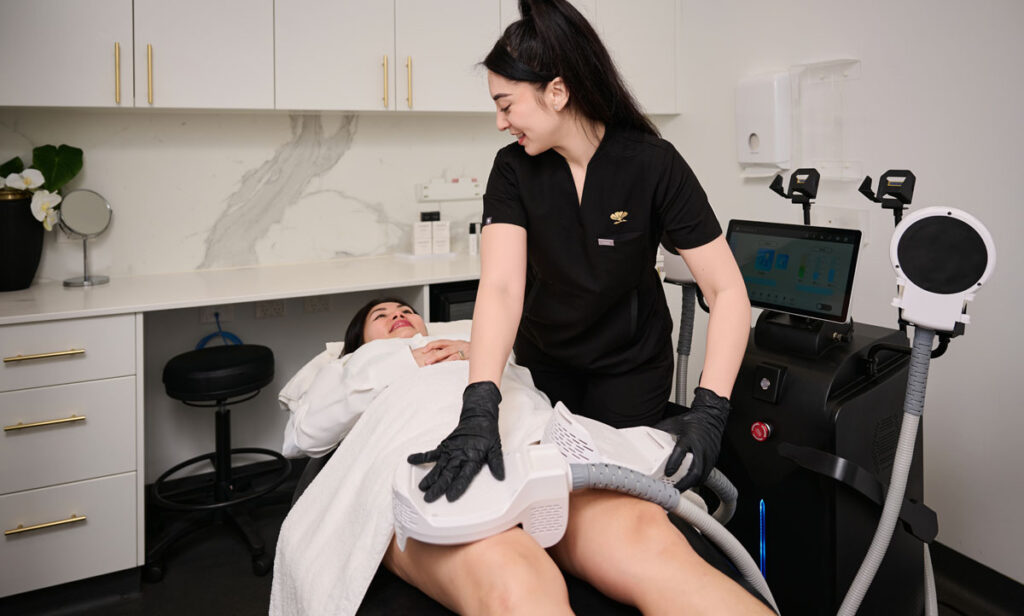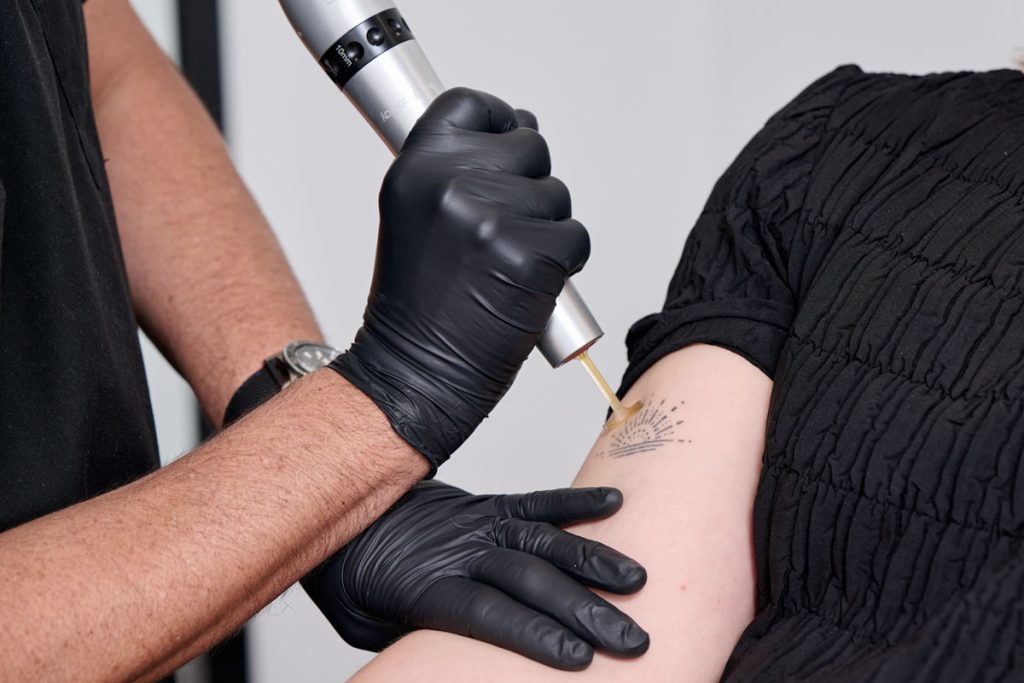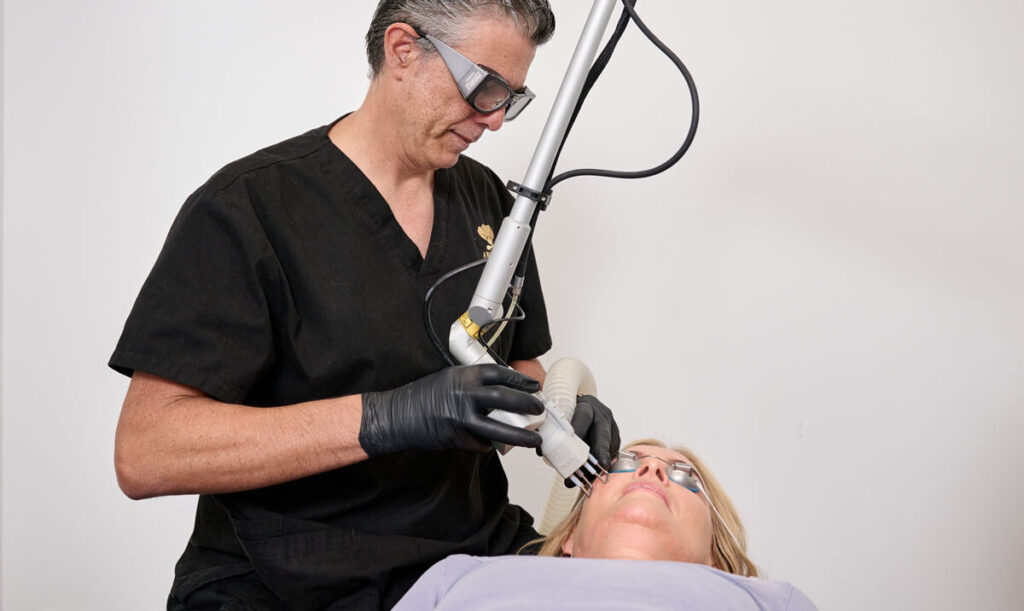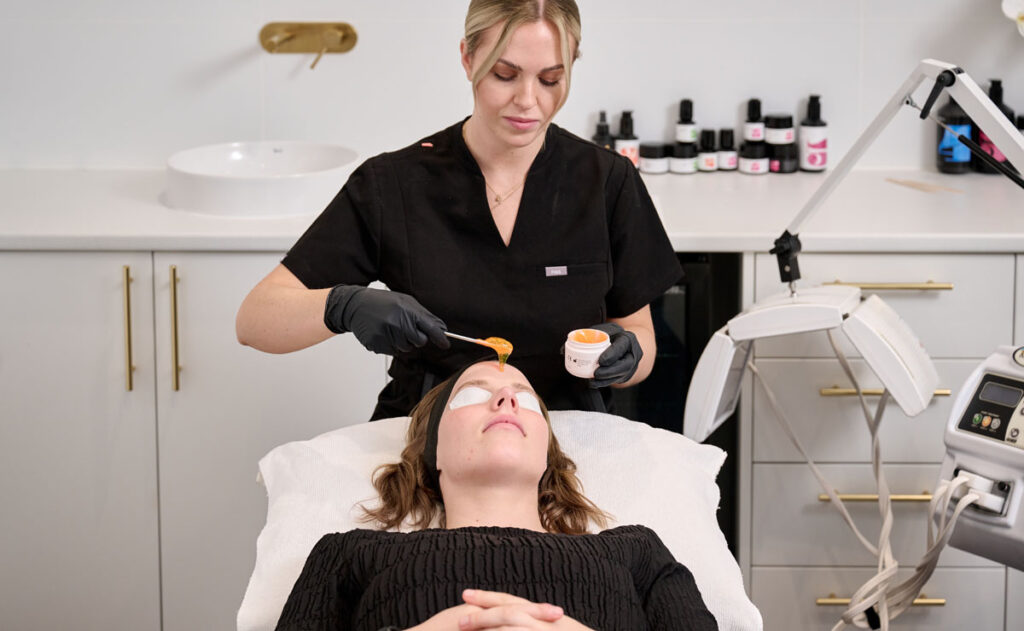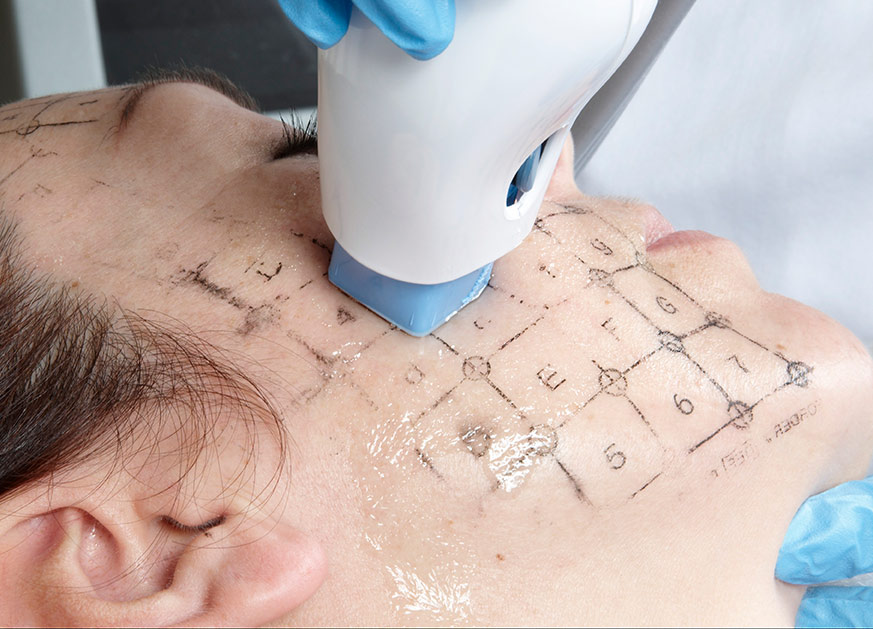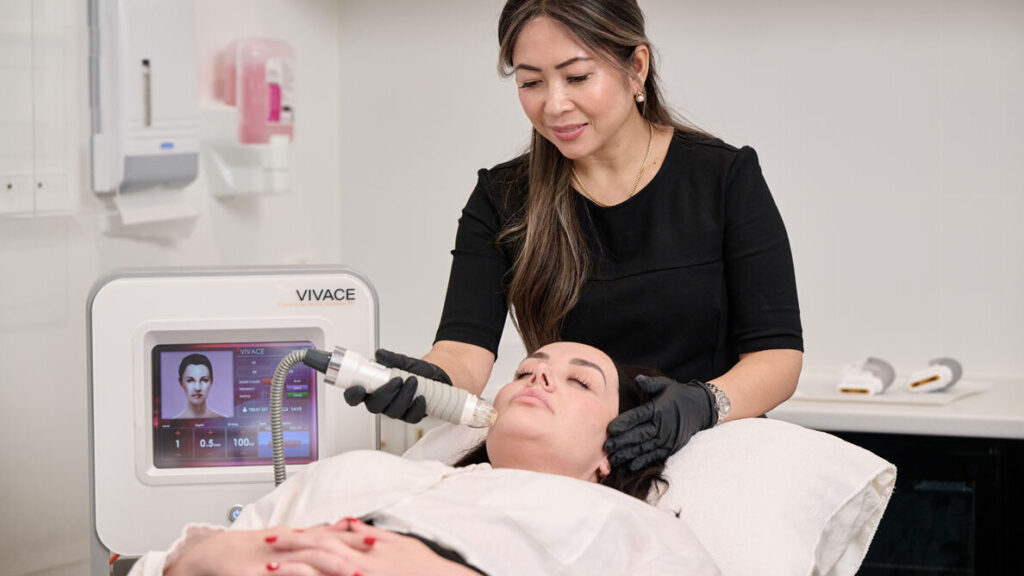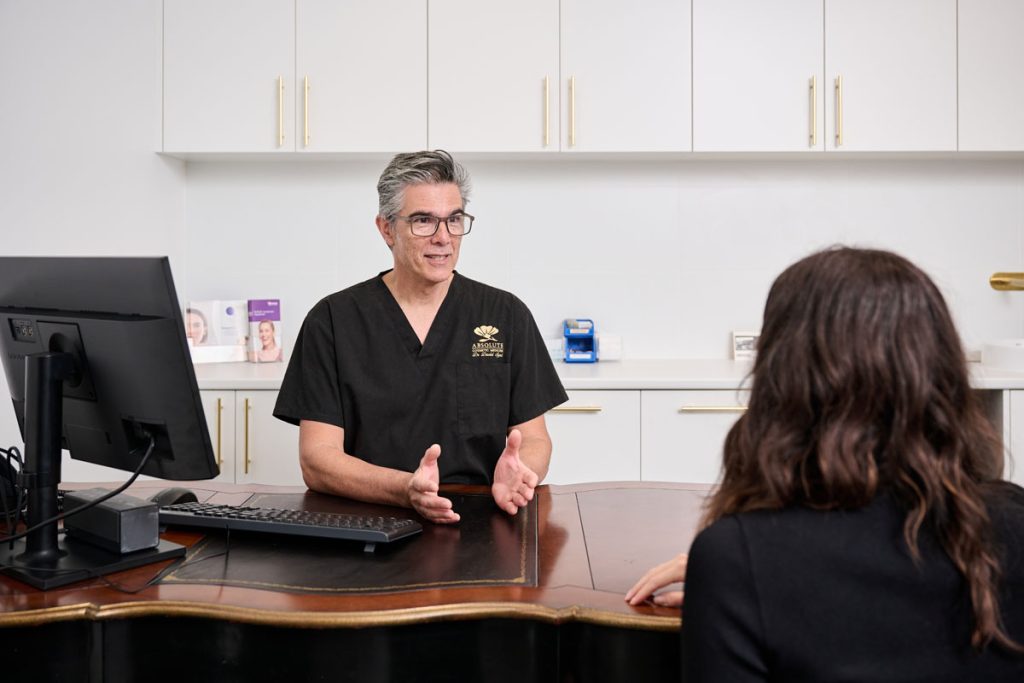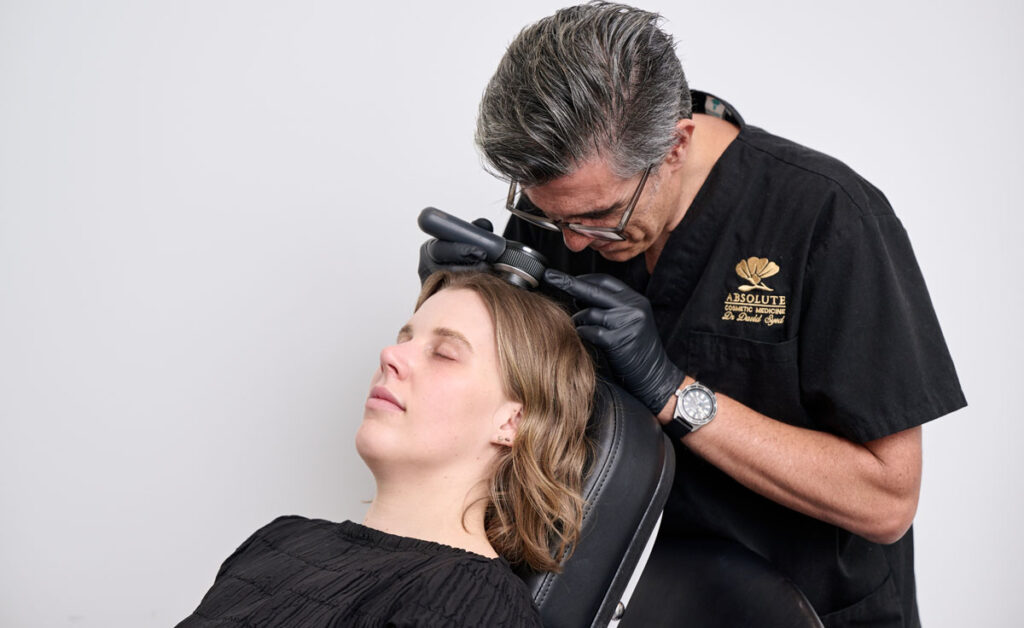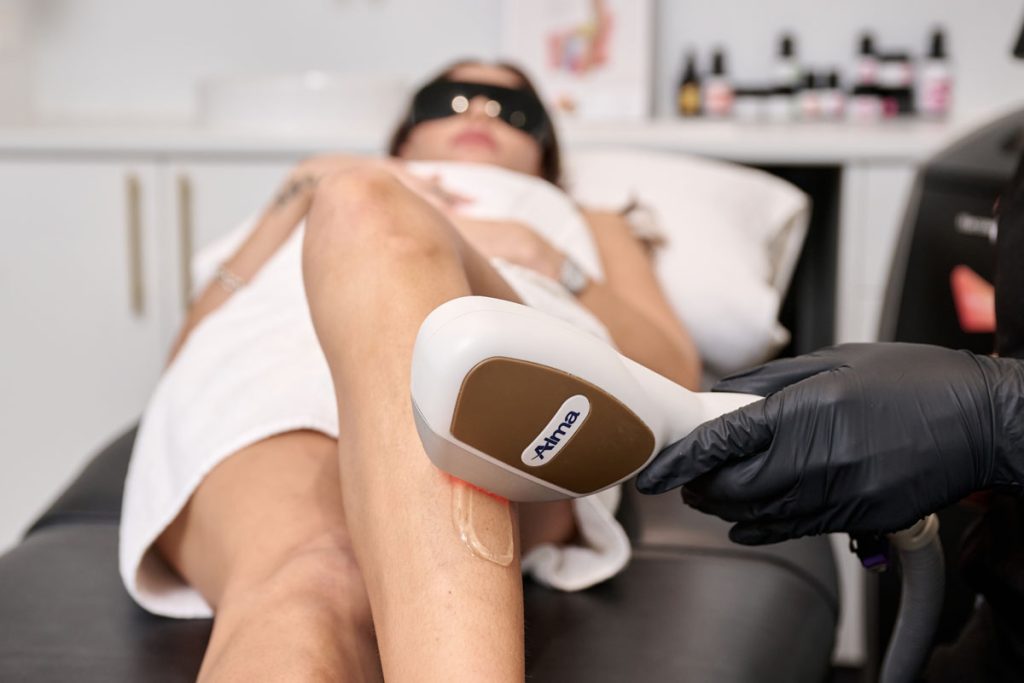Facial volume loss, a common concern among many individuals, particularly as they age, refers to the decrease in facial fat and collagen. This natural process often leads to sagging skin, wrinkles, and a less youthful appearance. Factors contributing to facial volume loss include ageing, lifestyle choices, and environmental factors. Understanding this condition is the first step towards choosing the right cosmetic solution.
Facial Volume Loss: An Overview
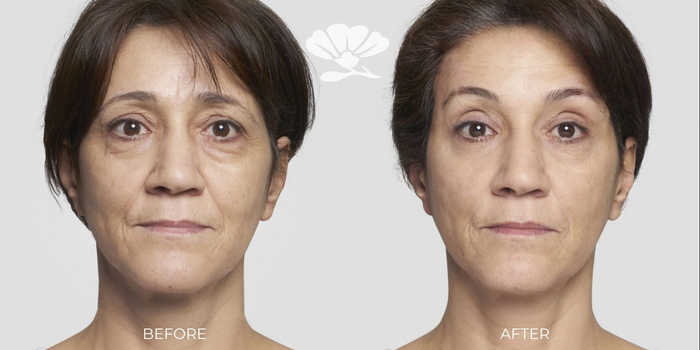
Mid-Face and Eyebrow Soft Thread Lift (image from supplier).
Treatments we offer
Surgical Procedures for Facial Volume Loss
What Is It?
Surgical procedures for facial volume loss primarily involve facelifts or fat grafting. These procedures reposition or add volume to the face.
Who Is It For?
Ideal candidates are those experiencing significant facial sagging and volume loss, usually in their late 40s to 60s. Patients must have realistic expectations and be in good general health.
Process
The surgical process varies depending on the procedure. A facelift involves making incisions, typically along the hairline, to lift and tighten the facial skin. Fat grafting involves extracting fat from another body part and injecting it into facial areas lacking volume.
Results and What to Expect
Post-surgery, patients can expect swelling and bruising, with recovery times ranging from two weeks to a few months. However, it’s important to have realistic expectations and understand that surgery can’t stop the ageing process.
*It’s important to recognise that any cosmetic surgical or invasive procedure comes with inherent risks and the possibility of complications. Therefore, before moving forward, we strongly recommend that you allocate time for thorough research, self-education, and consider seeking a second opinion from a qualified practitioner to make an informed decision.
Non-Surgical Procedures for Facial Volume Loss
What Is It?
Non-surgical procedures, such as dermal fillers and thread lifts, offer a less invasive alternative to surgery. These treatments involve injecting substances or placing threads under the skin to restore volume and stimulate collagen production.
Who Is It For?
These procedures are suitable for individuals with mild to moderate volume loss who prefer minimal downtime and are apprehensive about undergoing surgery.
Process
Dermal fillers involve injecting hyaluronic acid or other biocompatible materials under the skin. Thread lifts use biodegradable threads to lift and support sagging skin. Both procedures are typically quick, with immediate visible results.
Results and What to Expect
Results from non-surgical procedures are temporary, lasting anywhere from 6 months to 2 years, depending on the treatment. Side effects may include mild swelling, bruising, and discomfort. These treatments require ongoing maintenance for sustained results.
Expected Results and Maintaining Results
Regardless of the chosen procedure, patients can expect a more youthful appearance with reduced signs of ageing. To maintain these results, follow-up treatments or lifestyle changes might be necessary. This includes using sun protection, maintaining a healthy diet, and possibly scheduling touch-up treatments. Consistent skincare routines and avoiding smoking can also prolong the results.
Frequently Asked Questions
Most patients report minimal discomfort. Local anaesthesia is used to minimize pain during the procedure.
Surgical results can last many years, while non-surgical treatments typically last 6 months to 2 years.
Surgical procedures require a recovery period of a few weeks. Non-surgical treatments usually have minimal to no downtime.
As with any medical procedure, there are risks. These include infection, asymmetry, and reactions to anaesthesia. Choosing a qualified and experienced practitioner helps to minimisethese risks.
Yes, often these treatments are combined for comprehensive results. Your practitioner will advise the best approach based on your needs.
Book a Consultation
Book NowAny questions?
Dr. Glenn Murray (AHPRA Registration MED0001196978) Registered Medical Practitioner. General disclaimer: Patient outcomes can vary due to factors such as... genetics, diet, age, exercise, lifestyle, weight, and overall health. It’s essential to understand that all invasive surgeries come with inherent risks and require a recovery period and specific care regimen. Detailed information regarding surgical risks and complications is available here, but it is advisable to conduct thorough research and obtain a second opinion to ensure you are able to make an informed decision. Please note that the information provided is general in nature and does not constitute medical advice or establish a doctor-patient relationship. For real patient images, please visit our Before and After page. Please be advised that surgical outcomes vary, from patient to patient, and comprehensive research is crucial before making any decisions. This website contains imagery which is only suitable for audiences 18+.
